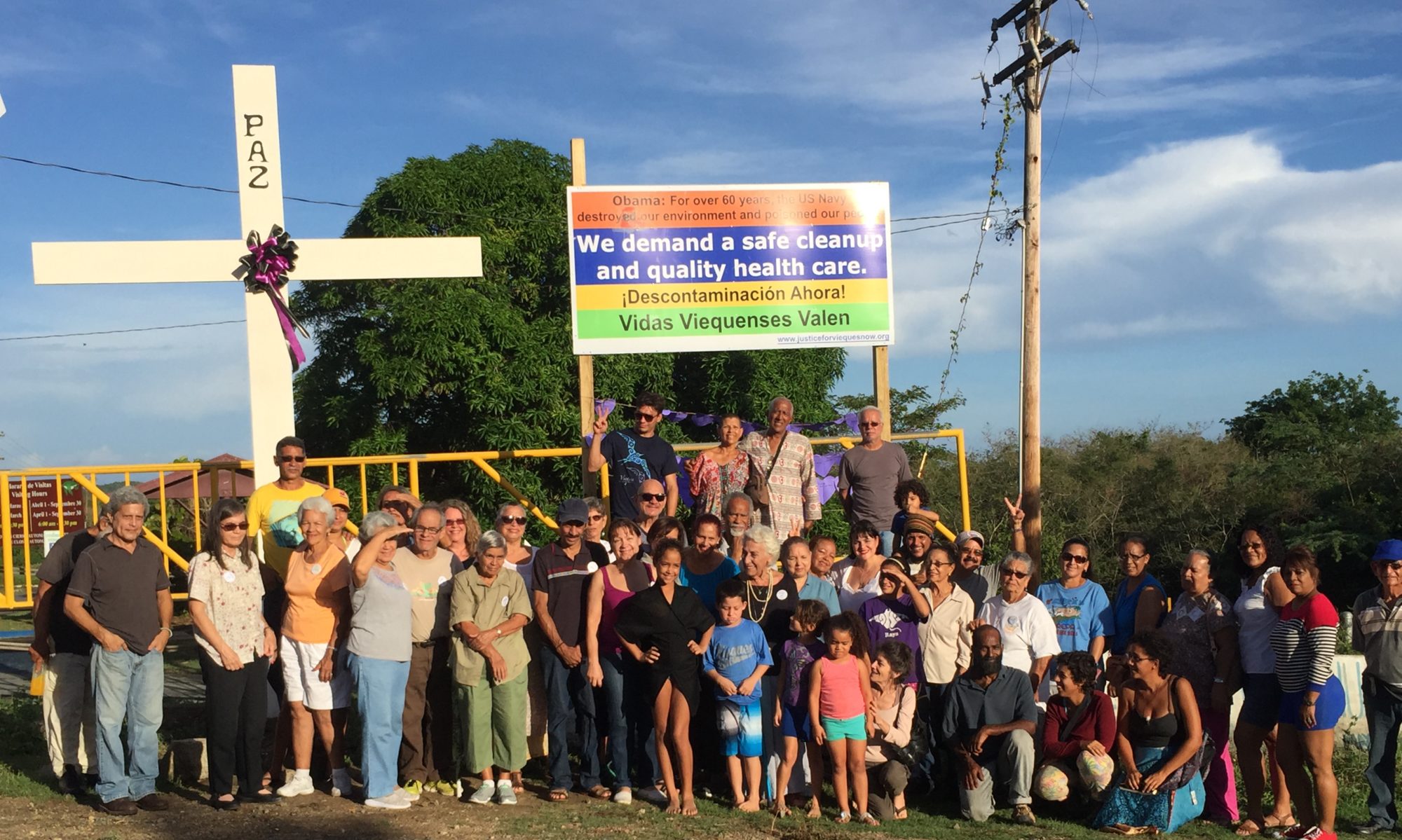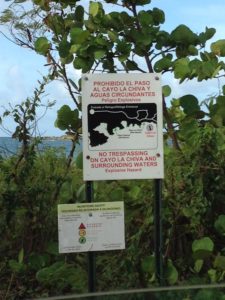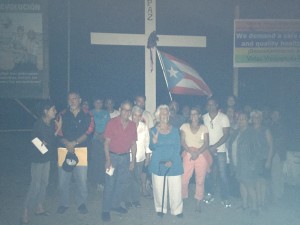PARA DIVULGACIÓN INMEDIATA – 29 de julio de 2017
COMUNICADO DE PRENSA – Vieques tiembla de nuevo con las explosiones provocadas por la Marina de Guerra
Vieques- Vidas Viequenses Valen convoca protesta Vieques tiembla de nuevo con las explosiones provocadas por la Marina de Guerra el 1ero de agosto en el Faro Punta Mulas a las 5:00 pm. Protestarán en la entrada de la reunión del Restoration Advisory Board (RAB) de la Marina de Guerra de los Estados Unidos las continuas detonaciones y quema abierta.
“La limpieza de Vieques es una farsa, no se está limpiando nada. Lo que están haciendo es quema abierta y detonaciones. Esta semana, el martes, 25 y jueves, 27 de julio a eso de las 9:00am se escucharon las explosiones, se sintieron y se vieron las columnas de humo esparciendo al aire los residuos de gases tóxicos de las explosiones provocadas por la Marina desde nuestras ventanas y lugares de trabajo. Es de las más fuertes que hemos sentido, pero es nuestro pan de cada día. Después de las seis décadas de bombardeo y contaminación este pueblo se levanta a denunciar esta práctica y a exigir el uso de alternativas existentes para la limpieza de nuestras tierras y mar,” expresó Myrna Pagán, portavoz de Vidas Viequenses Valen. En los Estados Unidos, las Fuerzas Armadas generan más desechos tóxicos que cualquier otra empresa. La Oficina de Rendición de Cuentas del Gobierno de los Estados Unidos estima que las fuerzas armadas tendrán que desechar unas 505,302 toneladas de municiones viejas en los años que vienen.
“La mañana de la detonación no podía respirar, mi papá me dijo me daban esos ataques de asma desde que era pequeña cuando la Mariana hacia sus maniobras. Por lo general estoy saludable pero estas últimas dos detonaciones las sentí fuerte, no podía parar de toser, hace tiempo no me pasaba” comentó Kiany Connelly, joven viequense parte de Vidas Viequenses Valen.
Myrna Pagán llamó a la EPA Environmental Protection Agency quienes le informaron se estaban destruyendo unas 300 unidades más cerca de la frontera con la comunidad. “Si no fuese por que llamo no me entero, nos tienen sin información, destruyen la artillería y no nos permiten prepararnos para protegernos de los efectos nocivos, los secretos de la Marina son letales”, denunció Myrna Pagán.
“Cuando se queman desechos tóxicos con quema abierta, detonación abierta o incineradora no se destruyen los desechos tóxicos. Algunos de los químicos van por el aire y se dispersan por el medio ambiente, contaminando la tierra y el agua y dañando la salud de las comunidades cercanas”, reclamó Ismael Guadalupe de Vidas Viequenses Valen.
“Es indignante que el mismo contratista de la Defensa (CH2MHILL) que ha estado manejando la quema y detonación al aire libre en Vieques tiene una cámara de detonación cerrada que se ha desplegado en otras comunidades. Por definición, la quema y detonación abierta causan la liberación descontrolada de carcinógenos y neurotóxicos al medio ambiente – los niños de Puerto Rico merecen un futuro saludable y la mejor tecnología disponible. La Marina tiene la capacidad y la responsabilidad de hacerlo realidad “, dijo Laura Olah, organizadora nacional de la Campaña de Cese al Fuego.
“Hay alternativas para la quema como la reducción química en fase gaseosa, oxidación con agua supercrítica, cámara de detonación, fitoremadiación, entre otras que además son más económicas para el gobierno a largo y corto plazo. Nos siguen enfermando, esto no ha parado desde que llegó la Marina de Guerra de los Estados Unidos a nuestras tierras”, reclamó Elda Guadalupe, viequense científica, maestra, parte de Vidas Viequenses Valen.
“La amenaza de la contaminación es real para Vieques y todo Puerto Rico. Si sufrimos los efectos de los polvos del Sahara que viajan miles de millas, cómo podemos ignorar las constantes detonaciones que ocurren a solo metros de distancia” declaró Myrna Pagán.
###
Vidas Viequenses Valen es un colectivo que lucha por los siguientes objetivos:
Sobre la Limpieza de Vieques
Exigir una completa y rápida limpieza de los terrenos y las aguas circundantes- todavía hay miles de bombas, granadas, napalm, Agente Naranja, uranio reducido y otros explosivos dejados atrás por la Marina. Detener la explosión abierta de bombas sin detonar. Garantizar la participación de la comunidad en la limpieza; entrenar viequenses como gerentes, administradores y científicos, así como promover oportunidades a las empresas viequenses para hacer ese trabajo.
Sobre la Desmilitarización y Devolución de Todos los Terrenos
Cerrar las instalaciones militares que aún quedan. Devolver al pueblo de Vieques toda la tierra aún bajo el control de la Marina de EE.UU. y el gobierno federal.
Contactos: Ismael Guadalupe, Vidas Viequenses Valen 787-612-0723, Myrna Pagán, Vidas Viequenses Valen 818-963-2344


